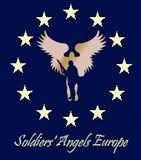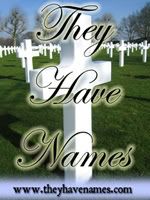
Centaur (Hospital ship)Sinking of the CentaurThe Centaur, 2/3rd Australian Hospital Ship, was a motor passenger ship converted in early 1943 for use as a hospital ship. In November 1941 it had rescued survivors of the German auxiliary cruiser Kormoran after it had sunk and been sunk by HMAS Sydney. On 12 May 1943 the Centaur sailed unescorted from Sydney at 0945 hours carrying her crew and normal staff, as well as stores and equipment of the 2/12th Field Ambulance but no patients. It was sunk without warning by a torpedo from a Japanese submarine on 14 May 1943 at approximately 0400 hours, its position being approximately 27°17' S, 153°58' E about 50 miles east north-east of Brisbane. Of the 332 persons on board, only 64 survived. These survivors spent 35 hours on rafts before being rescued. Sister Ellen Savage, the only one of twelve nursing sisters on board to survive, though injured herself, gave great help to the other survivors and was awarded the George Medal for this work. Link |
 Sydney, NSW. 1943. Starboard bow view of the Hospital Ship Centaur. Prominent red crosses and green lines are painted on her hull. Red crosses are also attached to her funnel and stern with another lying horizontally on the after deckhouse.
Sydney, NSW. 1943. Starboard bow view of the Hospital Ship Centaur. Prominent red crosses and green lines are painted on her hull. Red crosses are also attached to her funnel and stern with another lying horizontally on the after deckhouse. AWM 302800
The Centaur had done everything right. The ship was appropriately marked as a hospital ship, displaying all the insignia required. It had departed under radio silence, a factor that excaberated the long delays before they were rescued. Due to the radio silence there had been no calls for help and no one had known to raise the alarm. The Centaur had been sighted from a distance not long after the attack but because many had not been told it had departed they assumed it was a Naval training exercise.
And so these brave souls were left, fighting to stay alive amidst the threat of hypothermia and shark attack, battling to stay afloat with countless injuries ranging in severity.
Sister Ellen Savage is one who deserves to be remembered for her acts following the attack on the Centaur.....

Seaman Martin Pash remembered that the Centaur “just went straight down. There was no noise or anything – a lot of people calling out, the nurses and all … The deck boy brought Sister Savage on. She had a fractured jaw. You wouldn’t think there was anything wrong with her but she suffered very badly. She had broken ribs and [was] bruised and one of the fellas gave her his overcoat to put over her.” Despite her own injuries, 30-year-old Sister Ellen Savage nursed the wounded and boosted the morale of the others. The other eleven nurses all drowned. After a day and a half adrift on life rafts, the 64 survivors were spotted by an RAAF Anson and recovered by the destroyer USS Mugford. Sister Savage’s courage was recognised by the award of the George Medal. George Medal recommendationSister Ellen Savage, Australian Army Nursing Service, was awarded the George Medal for courage during the sinking of the hospital ship Centaur off Stradbroke Island, Queensland, on 13 May 1943. Link |

A_C



1 comment:
Thanks A_C I knew there was a story behind that poster. It's important to remember all the "support" personnel that gave so much.
Post a Comment